Wine Blending At Laguna Winery 9/22/2012

Let The Festivities Begin

Upon arrival we did not know exactly what to expect....
Blending Party???
Did You Know? - The English word "wine" comes from the Proto-Germanic *winam, an early borrowing from the Latin vinum, "wine" or "(grape) vine", itself derived from the Proto-Indo-European stem *win-o- (cf. Hittite: wiyana; Lycian: oino; Ancient Greek: οἶνος oinos; Aeolic Greek: ϝοῖνος woinos).
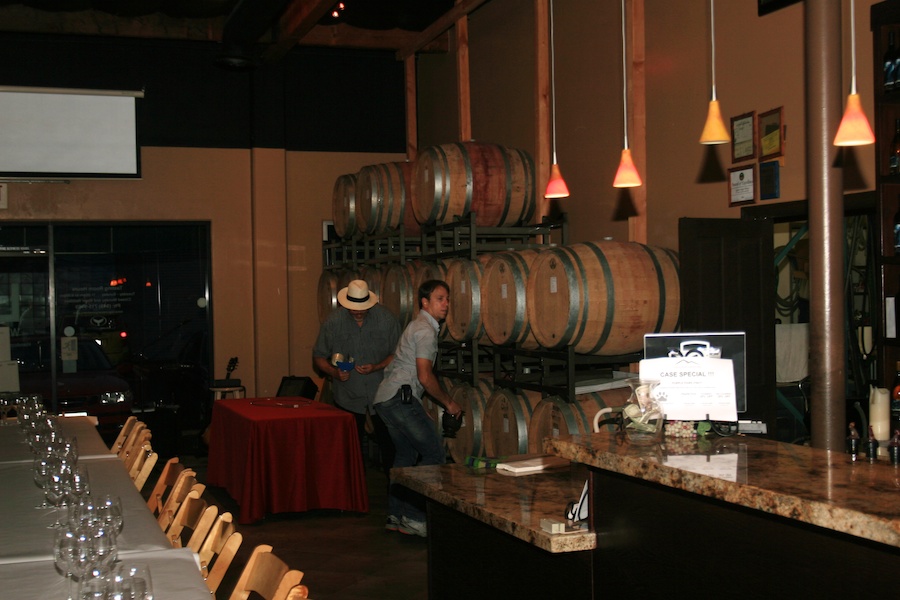
Marlowe Joseph Huber was super busy... He is setting up the cask-taps and tubes



Time to mix it up.... We did!

OMG... The "cheese plate" was a "cheese plank"

The goat cheese was magnificent....
as was everything else....
Did You Know? - The word cheese comes from Latin caseus, ] from which the modern word casein is closely derived. The earliest source is from the proto-Indo-European root *kwat-, which means "to ferment, become sour".
More recently, cheese comes from chese (in Middle English) and cīese or cēse (in Old English). Similar words are shared by other West Germanic languages — West Frisian tsiis, Dutch kaas, German Käse, Old High German chāsi — all from the reconstructed West-Germanic form *kasjus, which in turn is an early borrowing from Latin.
When the Romans began to make hard cheeses for their legionaries' supplies, a new word started to be used: formaticum, from caseus formatus, or "molded cheese" (as in "formed", not "moldy"). It is from this word that the French fromage, Italian formaggio, Catalan formatge, Breton fourmaj, and Provençal furmo are derived. The word Cheese itself is occasionally employed in a sense that means "molded" or "formed".

Marlowe was quite the host.... taking care of the smallest detail

He looks so natural with the grapes....

More goodies arrived

Cheese crackers freshly baked.... Wow... Life is indeed good
Did You Know? - Crackers are said to have been invented in 1792 when John Pearson of Newburyport, Massachusetts, USA made a pilot-like bread product from just flour and water that he called Pearson's Pilot Bread.
It was an immediate success with sailors because of its shelf life. This was the first cracker bakery in the United States, and produced crackers for more than a century Crown Pilot Crackers from the same recipe were made and sold in New England up until early 2008, and used in traditional clam chowder recipes.
But the real revolutionary moment in the life of the cracker came in 1801 when another Massachusetts baker, Josiah Bent, burned a batch of biscuits in his brick oven. The crackling noise that emanated from the singed biscuits inspired the name - crackers - and a bit of ingenuity, as Bent set out to convince the world of the product's snack food potential.
By 1810, his Boston-area business was booming, and, in later years, Bent sold his enterprise to the National Biscuit Company, which now does business under the Nabisco name.
Wine Blending Explained
We did a 75% Zin and 25% Sarah for our first bottle and then did 75% Zin and 25% Cab for the second bottle. Quite amazing change in taste with our "Secret Blend" which we shared with everyone.

"Ladies and Gentlemen, let me introduce the stars of the evening.... Our wines!"

What if the world was Black & White???
Did You Know? - Wine blending is the art of mixing two or more varietals together to produce a consistent, high-quality finished wine. There are many reasons for blending: to enhance the aroma, improve the color, add or minimize flavors or tastes. This was our chance to be winemakers for the day and createour own unique blends.

Guitarist Richard Cozzi
provided beautiful music all evening....

The Pinot Noir must have been "bad" as it stayed in its own corner.... The Pinot was MAGNIFICENT

The wine tube goes into the barrel where gravity takes over and there is a clamp on the end


The clamp simply unsnaps allowing the wine to flow into your glass

The missing seat is where the photographers is seated

Bob and Donna
We Started Officially With Champagne... Marlowe Did The Honors

He poured raspberry and brut

Sue thought all these glasses were hers.... OK, only three

Paul is in his official wine costume

We could be famous after this evening...

Another short demonstration of the wine siphon

Did You Know? - Tasting wine from a barrel is the same as tasting wine from a bottle. The difference is the need for a siphon to draw the wine out and pour it into a glass. However, wine in a barrel can hold different stages of maturity. Some wines will be mature and ready for release, while young wines will taste raw and astringent from the unripened tannins. Generally, most barrel tastings are done when wine is near or at maturity and all flavor components have come together.

Four different wines require a serious look... Well, it makes Paul look like he knows what he is doing

We brought our own scientist to assist in doing the necessary wine percentage calculations

The guests were having a lot of fun this evening

We studies the barrels labels carefully

Great minds are working out the details....

Paul figured out the valve... Keeping the tube LOW made the wine jump out of the barrel

Most of the guests mastered the value/tubes by the end of the evening
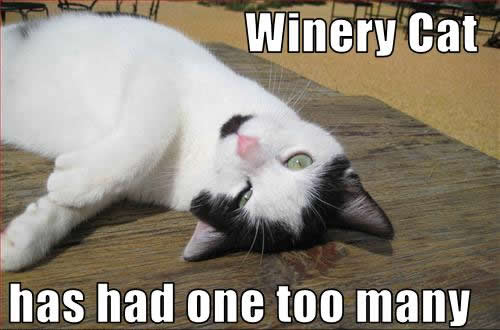


There were 32 guests this evening and a lot of glasses

Mad rush to the goodies.... Everything was wonderful... The Orzo Pasta with Tomatoes was outstanding
Did You Know? - Orzo (Italian for "barley", from Latin hordeum), also risoni (It.: "big rice") is a form of short-cut macaroni, shaped like a large grain of rice. Orzo can be served alone, as a soup accompaniment, as part of a salad, or baked in a casserole.

Corking Is A Science

Donna is ready to put a cork in it...

Where do the bottles start and the shirt end?

"I have mine!!"

Paul studies the corking procedure
Did You Know? - As late as the mid-17th century, French vintners did not use cork stoppers, using oil-soaked rags stuffed into the necks of bottles instead.
Wine corks can be made of either a single piece of cork, or composed of particles, as in champagne corks; corks made of granular particles are called "technical corks".

It's easy when an expert show you how

Paul watches intently
.. We are going manual soon

We needed some corks... We are ready to go!

All eyes are on the wine maker
and the "floor corker"

Did You Know? -
A floor corker is used to place a cork in a bottle. You put the cork in a small opening and the bottle under it and pull down on a lever which squeezes the cork to a diameter just a bit smaller then the bottle opening and a plunger pushes the cork into the bottle opening and when you pull the lever back to the up position it releases the cork which at the same time seals the bottle
Now We Put A Capsule (Foil Cap) On The Bottles...
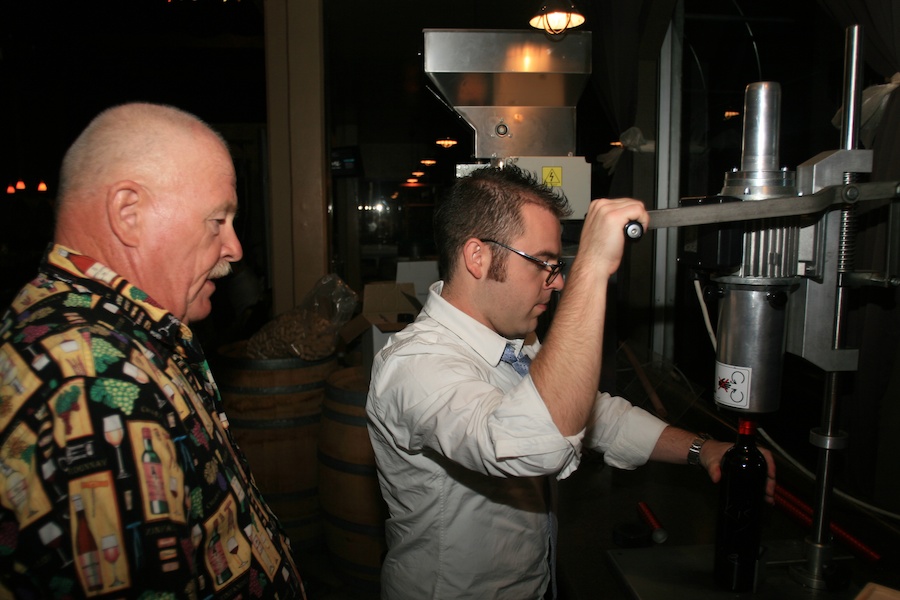
Putting on the foil cover
Did You Know? - Most wine bottles are sealed with a cork, although screwcaps are increasingly found. Commercial corked wine bottles typically have a protective sleeve called a capsule (commonly referred to as a "foil") covering the top of the bottle. The purpose of which is to protect the cork from being gnawed away by rodents or infested with the cork weevil., and to serve as collar to catch small drips when pouring.
The capsule also serves as a decorative element of the bottle's label. Capsules were historically made of lead; However, because of research showing that trace amounts of toxic lead could remain on the lip of the bottle and mix with the poured wine, lead capsules (lead foil bottleneck wrappings) were slowly phased out, and by the 1990s, most capsules were made of tin, heat-shrink plastic (polyethylene or PVC), or aluminium or polylaminate aluminium.

Do you remember the "before shot??"

Wow.... Looks so plain and simple an hour before the wine begins to flow...

Bottles are beginning to show up blended and ready to go!

Ah... What is this man up to????

The dessert is disappearing
NOTE: If you use chopsticks to eat dessert there are no calories
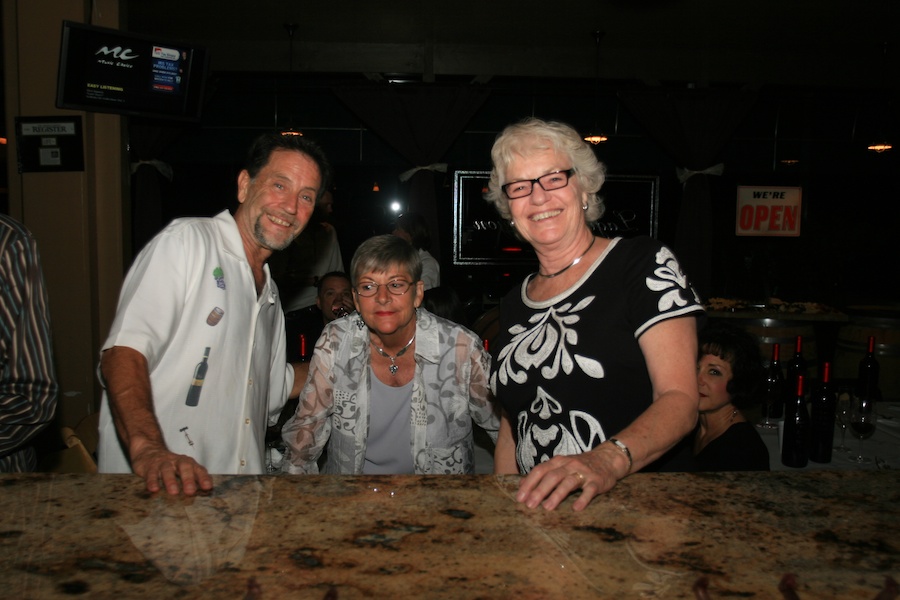
New friends....

The music was an interesting mix of classical and quite modern.... Proud Mary anyone???

How could he keep his mind on the music with all this fine wine so close by??
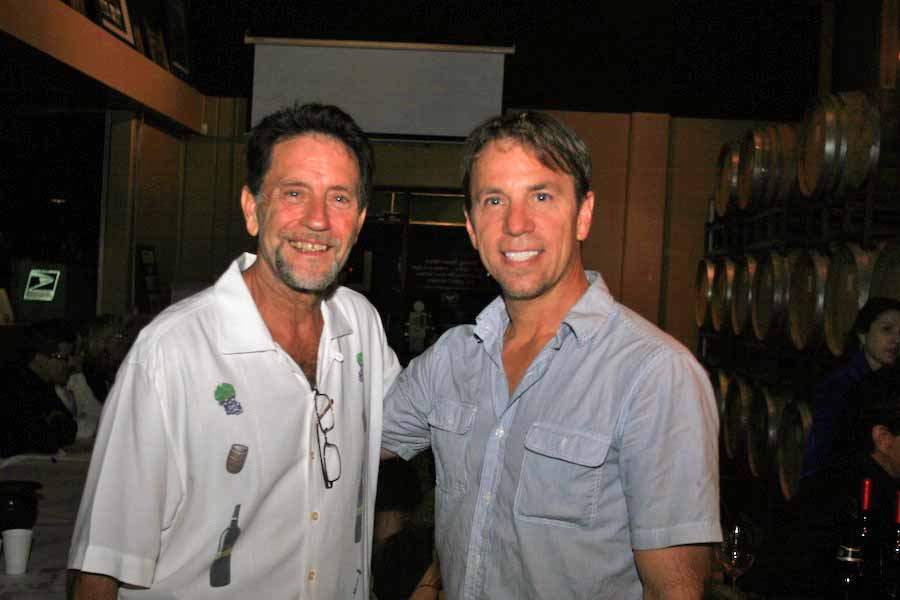
Bob and Marlowe saying good night
... Thank you for a delightful evening! We will certainly do this again

Pencils and paper....

The party continues as we head for home.... Big day tomorrow

Cleanup is underway.... The staff this evening were just great... Helpful... Friendly... Invisible...



A great evening was had by all!